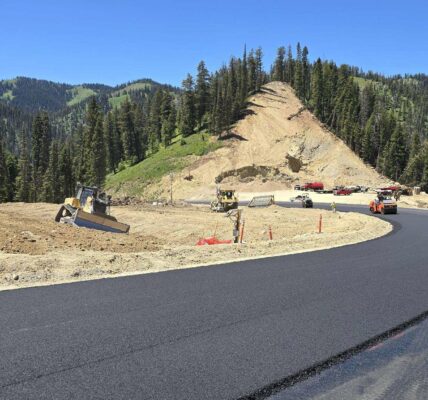WSGS Launches Interactive Geologic Hazards Map of Wyoming
The Wyoming State Geological Survey (WSGS) has developed a new online interactive map that will make researching earthquakes, landslides, and other geologic hazards that occur in Wyoming a little easier.
Geologic hazards refer to the geologic conditions that cause risk to people and property. Other geologic hazards that occur in Wyoming include windblown deposits, expansive soils, and faults that have been active within the past 1.6 million years. The WSGS studies geologic hazards in an effort to mitigate risk and protect the public.
“The geology we love in Wyoming, such as scenic mountains and Yellowstone volcano, unfortunately means we are vulnerable to geologic hazards,” says WSGS Director, Dr. Erin Campbell. “The online hazards map is a tool to help recognize those hazards so they can be avoided or mitigated.”
The goal of the Wyoming Geologic Hazards Map is to provide a central location to find the most relevant general information related to geologic hazards. “The map is also intended to be simple to use but contain a significant amount of data and pathways to deeper research when desired,” says Jim Stafford, WSGS geohydrologist.
Users can zoom in to an area of interest or search for a specific address or location. Layers can be viewed individually or all together, and measuring tools are available. The map also includes base layers about transportation, political boundaries, township/range, hydrology, and geology.
“This map features historic and recent earthquake data in and near Wyoming, landslides mapped by the WSGS, and shows the status and location of faults active within the past 1.6 million years” Stafford says. “Principally, the map is interactive, which enables the user to pan and zoom, click on features to learn more, and access a variety of reference layers.”
Layers were created by extracting data from existing geologic databases as well as geologic maps of Wyoming. For example, the earthquakes layer provides information about seismic events in and just outside Wyoming dating back to 1959. Earthquakes outside of the state border are shown because the events were reportedly felt in the state. Seth Wittke, WSGS hazards, mapping, and water resources manager, says the earthquakes layer will be updated monthly, and all other layers will be updated as new data become available.
“We are developing additional tools that will allow various ways to query the data and create user-specific maps,” he adds.
A snapshot of some geologic hazards that occurred in Wyoming in 2018 can be found in the recently published Geologic Hazards in Wyoming Summary Report. Additional general information about geologic hazards in Wyoming is available on the WSGS hazards website.
The Wyoming Geologic Hazards Map is the fifth online interactive map developed by the WSGS. The WSGS launched the Oil and Gas Map of Wyoming in 2016 followed by a Geochronology Map of Wyoming and a Groundwater Atlas of Wyoming in 2017, and a Mines and Minerals Map of Wyoming in 2018. The maps make Wyoming geologic data easily available to the public. There is no cost to access these maps.





